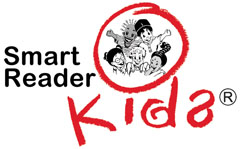By Gheeta K.
Fashion designer Coco Chanel once said, “In order to be irreplaceable, one must always be different.” In any business environment, the main, long-term sustainable competitive advantage is the innovation and implementation of creative ideas in the business, be it in the way services are delivered, the way the products are packaged or the type of products that are created. This applies to the franchise system as well. A franchise is more successful if it is distinguishable from other businesses in the same industry.

Franchising is increasingly being used by businesses in Malaysia to expand quickly and multiply their wealth. Many local businesses have taken this step to build their business and create a greater awareness of their trademark locally and overseas. Take for instance, the Malaysian educational provider, Smart Reader (an example of one of their successful programmes is pictured below).
The company started its business in 1988 and now – through active franchising – has more than 300 outlets locally and over 150 outlets overseas, in countries such as the Philippines, Thailand, Taiwan, China and Syria.

Another notable local franchisor is Nelson’s (pictured above). Dato’ Nelson Kwok first stumbled onto the retail business concept of selling corn in 1985, when he started a retail outlet called “Nelson’s Connection”, selling toys and household goods and on the side, some corn. However, once it was discovered that his corn business was outperforming his other merchandise, Dato’ Nelson restructured the business model into a retail outlet selling corn-in-a-cup as the main product. The first Nelson franchise was set up in Penang in 1995 and since then, there has been no looking back. Today Nelson’s franchises have grown to over 800 outlets worldwide.

Franchising allows one to expand their business without borrowing capital to develop the brand and the business. The basic rule to franchising is that the brand or trademark owner (franchisor) will license out his/her trademark to a third party (franchisee) and provide a full-fledged system of conducting and carrying out the business to the franchisee, who then carries out a similar or identical business in a different location.
Creating and establishing a successful franchise is a huge task in itself and therefore it is vital for anyone who is considering turning their business into a franchise system, or who has recently entered the system, to conduct an intellectual property audit and ascertain whether the intellectual property assets within the business have been protected (where protection is available). Protection of intellectual property rights in the franchise will not only deter others from copying the trademarks, logos, promotional material, confidential information, confidential know-how, processes and shop layouts of the franchise, but it will also act as ammo in Court when action is initiated against the “copycats”.
|
PATENTS/UTILITY INNOVATION |
INDUSTRIAL DESIGN |
TRADEMARK |
COPYRIGHT |
CONFIDENTIAL INFORMATION |
|
|
APPLICABLE LAW |
Patents Act 1983; |
Industrial Designs Act 1996 |
Trade Marks Act 1976; |
Copyright Act 1987 |
Common Law |
|
SCOPE OF PROTECTION |
Processes, products or compositions of matter. Not for business methods. |
Appearance of an article. Not for functionability. |
Word, sign, logo or symbol used to identify source of products/services. |
Ideas expressed in a literary, musical, artistic form. |
All confidential information or trade secrets. |
|
REGISTRATION PROCESS |
Takes around 4-5 years. |
6-9 months. |
Takes around 2 years. |
Rights automatically granted. No registration system. |
No registration but it is essential that information is kept confidential. |
|
EXAMPLES OF IP IN A FRANCHISE BUSINESS |
|||||
|
(i) F& B |
Cooking apparatus or machinery |
Staff uniform, shape of food items, patterns on plates and design on cutleries, interior design or layouts and menu boards |
Name of restaurant and menu items |
Menu card and Menu items |
Recipes, customer list, supplier list, mark-up rates |
|
(ii) Beauty & Slimming |
Composition of the products or machinery used for slimming |
Design of the product packaging or layout of the slimming centre |
Name of products, name of slimming centre, name of packages and tag lines |
Brochures, flyers and other promotional material |
Technique used for slimming, customer list, and pricing of packages |
|
(iii) Educational |
Hardware (e.g. abacus) |
Teaching aids and student uniforms |
Name of the teaching method, name of the centre and name of the courses |
Software, teaching manuals and textbooks |
Student list, staff remuneration, marketing/ promotional strategies |
A primer on the types of intellectual property rights a franchisor can own is shown in the schedule above. As indicated, there are numerous aspects of a business which make it unique and distinguishable from other businesses in the industry. All these unique elements which are peculiar to your business should be protected before the business is developed into a franchise. Although Chanel said that being different was the key to being irreplaceable, remember that being different matters naught if the “difference” can be replicated without any recourse in law.
 Geetha K. is the Director of Trademark and Industrial Designs Division of KASS International Sdn Bhd, an established Malaysian intellectual property firm with offices in Malaysia, Singapore and Indonesia. She has extensive experience in handling all aspects of trademarks and designs in various industries, including the pharmaceuticals, foods & beverages, automotive and apparel industries, and manages local, regional and international portfolios. If you have any queries or need more information, please visit www.kass.com.my or drop an e-mail to ipr@kass.com.my.
Geetha K. is the Director of Trademark and Industrial Designs Division of KASS International Sdn Bhd, an established Malaysian intellectual property firm with offices in Malaysia, Singapore and Indonesia. She has extensive experience in handling all aspects of trademarks and designs in various industries, including the pharmaceuticals, foods & beverages, automotive and apparel industries, and manages local, regional and international portfolios. If you have any queries or need more information, please visit www.kass.com.my or drop an e-mail to ipr@kass.com.my.






